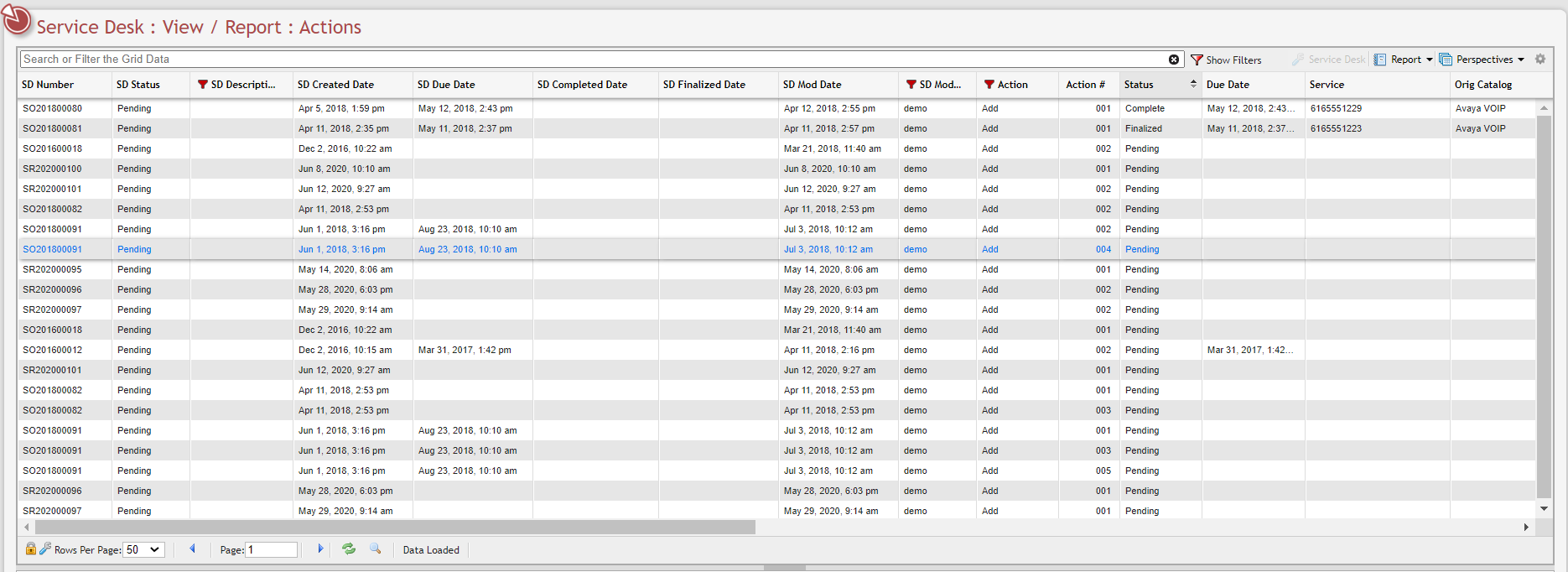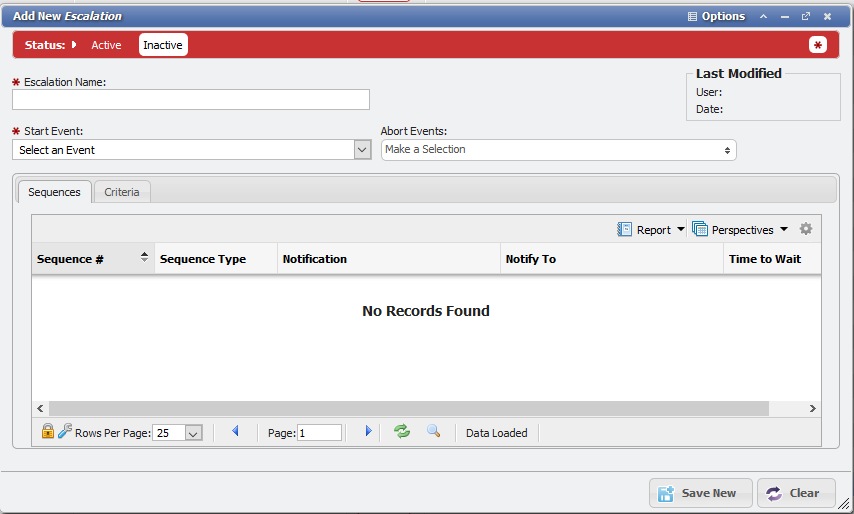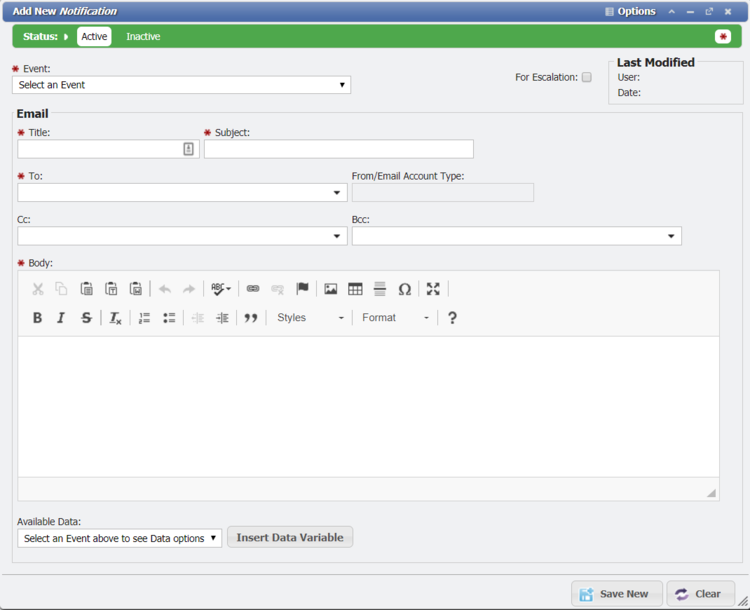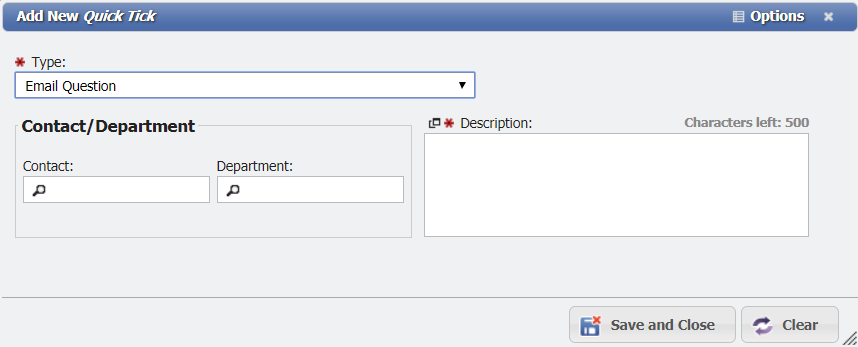Create, Build, and Adding in PCR360
Overview
This reference page includes documentation on how to quickly create, add, and build information in PCR360. For more information on the sections documented on this page, please visit their specific pages.
How to Add a New Cable
Go to Main > Cable > Cable Maintenance.
Click the
 button.
button.Enter a unique Cable Name.
Choose a value on the Cable Type drop-down.
You may optionally enter the Owner, the Length and Signal Loss for the Cable.
Next we are going to specify the capacity of the cable either in terms of pairs or strands, enter the capacity of the
cable by specifying the Low and High Pair/Strands. (center of screen)Choose the initial Status of the Pairs/Strands for this cable. (Spare, Reserved, Unknown, etc.)
You may optionally choose the Type of cable (Voice or Data) from the Type drop-down.
Choose the equipment the cable pair/strands originate from (note: the pair/strands in an individual cable can originate
from different frames/devices) You may enter the frame/device name or chose it from the picker.If known you may also specify the destination frame/device for this pair range.
Click the
button.
If the destination frame/device is not specified it can be entered later. Any time changes are made here and Save is clicked
the settings will be applied to the specified range of Pairs/Strands.
Any time you access this Cable from this screen you will get a summary section to give you an overview of the Cable.
How to use Service Desk to generate Reports

Service Desk Report Actions Grid
Navigate to Main > Service Desk > View/Report. Double-click on any corresponding nodes to see a query-only reporting Grid for the corresponding Service Desk entry type.
Reporting functionality for Service Desk entries is included here for convenience. Users will likely generate these queries/reports frequently. Accordingly, these Grids, which also appear within the 'Service Desk' folder in the Reporting section, cannot be modified.
However, all of the functionalities common to all other Grids in terms of reporting apply equally to these reporting Grids. For instance, Users can filter items on the Grid, sort by column, and print Grid reports. For more information on Grid functionality, see the Getting Started section entitled Critical Interfaces: The Grid.
For the Action and Workflow grid reports, if the Service Desk Items is associated with a Project, that information will also be available on the grid.
Build an Escalation
To build an Escalation that will use a Notification:
Go to Admin > Escalations/Notifications > Escalations.
Click the
 button to open the Escalation builder form:
button to open the Escalation builder form:
Add New Escalation form example
In the Escalation form, fill in the Required fields:
Escalation Name: Give the Escalation a meaningful name.
"Workflow Assigned & Manager Follow-up".
Start Event: Select a System, User-Defined, or SNMP Event that will begin the Escalation.
Must match the Event for the Notification we'll use: "ServiceDesk Item Workflow Assigned".
Add an Abort Event:
From the Abort Events list, check "'"
Sequences: On the Sequences tab, add at least 1 Sequence:
Click the
 button on the grid's toolbar
button on the grid's toolbarFill in required fields:
Sequence #: Any positive integer used to set the order of Sequence execution.
Type: The type of action taken by the Sequence. (described here)
Time To Wait: A time duration (e.g "1h 20m", "1h", "20m", "1", "1.5") that determines how long the Sequence waits to be executed on its turn.
Depending on the Type you select, other Required and optional fields will appear.
Click the
button.
Continue adding Sequences by making changes in the form and clicking the smaller
 button, or close the form.
button, or close the form.Close the form.
Build a Notification
There are a number of standard Notifications that come pre-built in PCR-360. Sometimes, however, these can be insufficient for an Organization's needs.
To add a new Notification that can be sent by an Escalation follow these steps:
Click the
 button located on the Grid toolbar.
button located on the Grid toolbar.This will open the 'Add New Notification' form.

Add New Notification Form example
On this form the User can specify the who, what, where of a given Notification.
The 'Event' field is required. The selected 'Event' in this field corresponds directly to the Start Event of an Escalation.
Set a 'Title', which is required, for the Notification for internal reference.
Set the email related fields of the Notification. These will be inserted into their equivalent email fields:
'Subject', which is required, will serve as the email subject.
'To', which is required, will serve as the To field of the email.
'Cc' will serve as the Cc field of the email.
'Bcc' will serve as the Bcc field of the email.
'Body', which is required, is the main body of the email.
Note: All of these fields can hold either static values like a particular email address, or a Hash Variable to dynamically select the information from elsewhere in PCR-360. For more information see the next section, Setting "Hash Variables".
Once all the fields have data, click the
 button to save the Notification.
button to save the Notification.
Use of HTML Tags
Some fields within PCR-360 allow Users to input HTML tags to make displaying that information a richer experience for those that are expected to consume it. For more information on HTML tag usage, please see the wiki entry for it.
Create a Project
Navigate to Main > Service Desk > Projects.
Click the
 button.
button.Change the Source if desired.

Source dropdown field example
Enter the Project Manager.

Project Manage field example
Enter a brief description of the Project. This is not required but encouraged.

Description field example
Enter the Due Date. If it's not known, it can be entered later.

Due Date field example
If known or needed; enter the Owner, Requestor, and Quoted Amount.

Owner/Requestor/Quoted Amount field examples
These fields are not Required and can be added later or not at all. Don't forget, the Owner can also be a Department instead of a person (Contact). To make a Dept. Hierarchy, the Owner just toggle the selector and enter the Dept Hierarchy (or to perform a search).
to perform a search).
Owner field example
Click the
button.
At this point, a Project number has been generated in the upper left-hand corner of the screen that can be used to group together Orders. This process is the same regardless of what types of Orders are associate with this project.

Create a Problem
Go to Main > Service Desk > Problems.
2. Click the

3. Change the Source if desired.

4. Enter the Service Rep into the field.

5. Enter a brief description of the Problem into the field. This is not Required but encouraged.

6. Enter the Due Date into the field. If it's not known, it can be entered later.

7. If known or needed, enter Requestor into the field.

8. If known or needed, enter choose the Owner. The Requestor and Owner fields are not Required and can be added later or not at all. Don't forget, the Owner can also be an Organizational Hierarchy instead of a person. To use a Department Hierarchy as the Owner, toggle the radio button.

9. Enter the Dept. Hierarchy (or use the Hierarchy picker

10. Click the
At this point, you should have a Problem number in the upper left-hand corner of the screen:

Create an Estimate
Go to Main > Service Desk > Estimates.
2. Click the

3. Change the 'Source' in the drop-down if desired.

4. Choose the 'Service Rep' (if not already populated with your name) into the picker.

5. If desired enter a brief 'Description' of the Estimate (this is not required but encouraged)

6. If known or needed enter the Contact or Department into the field.

Note: The Owner can be either a Contact or Dept. Hierarchy. To select either just toggle the selector and enter the owner (or use the picker

7. If known or needed, enter Requestor into the field.

8. Click the
An Estimate number will now be displayed in the upper left-hand corner of the screen.
Quick Tick and Quick Tick Type
Create a Quick Tick Type
This process is used to create a Quick Tick Type that can be used to create Quick Ticks.
Go to Admin > Service Desk > Quick Tick Types
Click the
 button.
button.Enter a Unique name for the Quick Tick Type
Each Quick Tick Type can minimally have a Contact and Description; just toggle the appropriate checkbox to have it appear for use.
If it is to be Required by the end User, mark the toggle of the Required checkbox.
Click the
button.
Optionally: define as many User Defined Fields as desired to maintain additional information.

Create a Quick Tick
There are two ways to create a Quick Tick.

Click the
 icon next to the 360 search.
icon next to the 360 search.Choose the 'Type'

Enter information into any required fields.
Click the
 button.
button.
Navigate to Main > Service Desk > Quick Tick.
Click the
 button.
button.Enter information into any required fields.
Click the
 button.
button.
